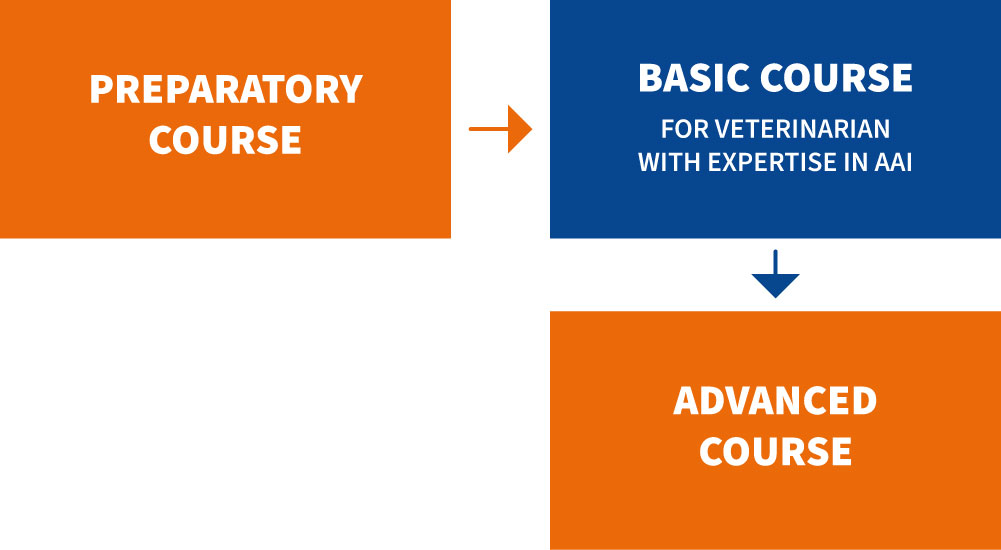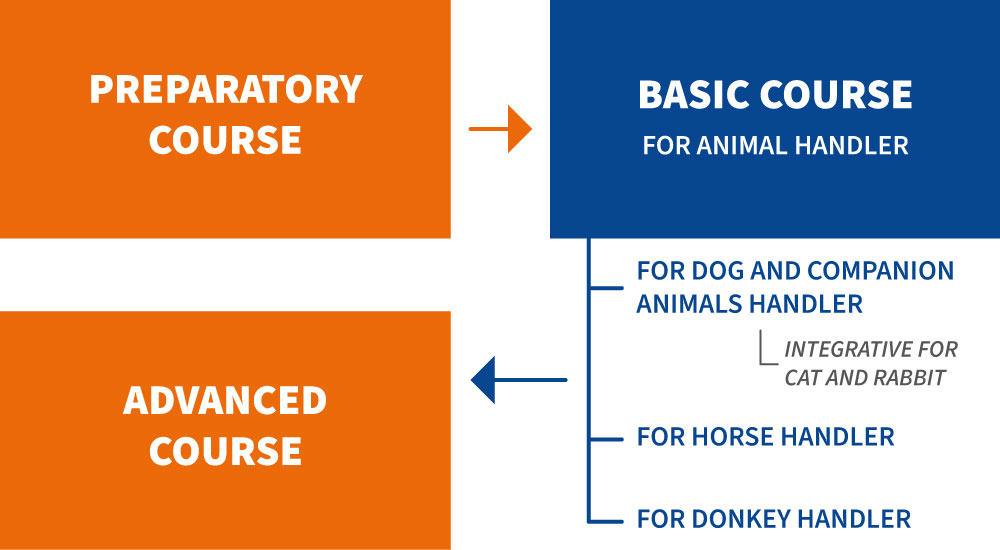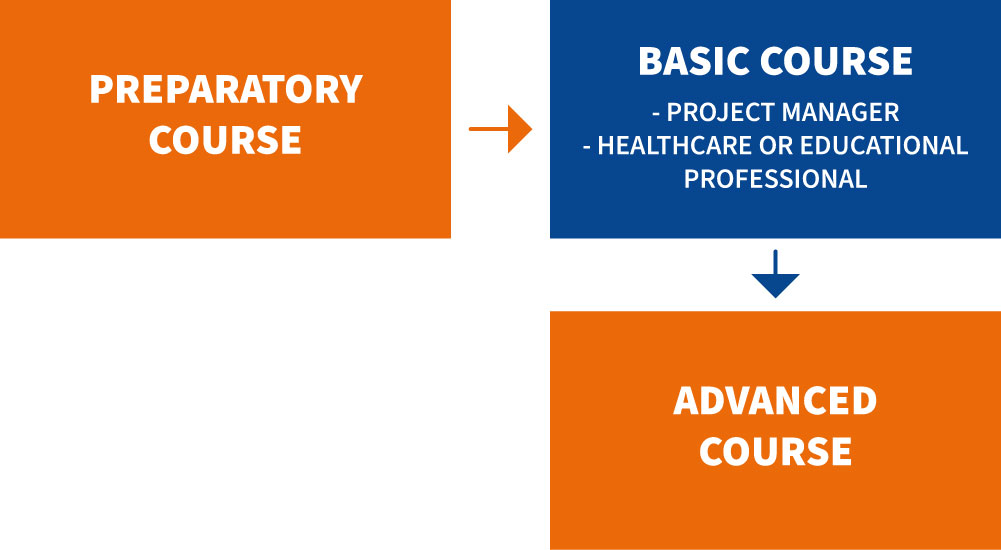Animal Assisted Interventions
Animal-Assisted Interventions (AAI) are a meaningful relationship between man and animal, conducted with specific professionalism in order to facilitate and enhance intervention on a therapeutic, educational and socialisation level, aimed at increasing the wellbeing of the person while respecting the animal.
Types of AAI
In Italy, the National Guidelines for AAI were approved through an Agreement between the Government and the Regional Authorities in 2015. These guidelines are based on the One Health approach, which emphasises the link between human, animal and environmental health. According to these guidelines, AAI can be categorised into different types: Animal-Assisted Therapies (AAT), Animal-Assisted Education (AAE), and Animal-Assisted Activities (AAA).
Animal-Assisted Eherapies (AAT)
Therapeutic intervention aimed at treating disorders related to the physical, neurological and psychomotor, cognitive, emotional, and relational spheres, targeted at individuals with physical, psychological, sensory, or multiple pathologies, of any origin. The intervention is tailored to the patient and requires a specific medical prescription. For instance, equine rehabilitation is an AAT that involves the use of horses.
Animal-Assisted Education (AAE)
Educational interventions aimed at promoting and supporting resources that facilitate potential growth and individual path definition, while assisting in fostering relationships and promoting social integration for individuals in need. The intervention can also be group-based and promotes the well-being of individuals in their living environments, particularly within institutions where individuals are required to demonstrate adaptability skills. AAE helps improve the person’s quality of life and reinforces their self-esteem. The mediation of domestic animals also facilitates the implementation of behavioural re-education paths for these individuals.
AAE finds application in various situations such as:
- Prolonged hospitalization or repeated admissions to healthcare facilities;
- Relational difficulties in childhood and adolescence;
- Emotional and psychosocial distress;
- Behavioural difficulties and socio-environmental adaptation challenges;
- Institutionalization in various settings (elderly care facilities, psychiatric institutions, healthcare residences, communities for minors, prisons, etc.);
- Conditions of illness and/or disability requiring an integrated home care program.
Animal-Assisted Activities (AAA)
Interventions aimed at recreational play and socialization promote improved quality of life and positive human-animal interaction. Activities involving competitive sports with animals are not considered AAA. In AAA, the bond with the animal serves as a source of knowledge and sensory and emotional stimulation. These activities target individuals or groups and promote the value of human-animal interaction for mutual well-being within the community.
In some cases, AAA serve as precursor to AAT/AAE and aim to:
- Develop skills through animal care;
- Enhance relational and communication skills;
- Stimulate motivation and participation.
The multidisciplinary team
AAI, in particular AAT and AAE, envisage the involvement of a multidisciplinary team capable to manage the complexity of the human-animal relationship, comprising different professional figures, both healthcare and non-healthcare, and operators who contribute to the design and implementation of the intervention, each for their own skills, working in close collaboration.
The professionals and providers involved are:
- Project manager (who coordinates the team);
- Veterinarian with expertise in AAI (who is responsible for the various aspects of the animals involved);
- Healthcare or educational professional (who manages the person during treatment sessions);
- Animal handler (who handles the animal during treatment sessions).
Training of the multidisciplinary team
Each figure involved in AAI must have completed a specific training course, as outlined in Chapter 9 of the national guidelines for Animal Assisted Interventions (AAI). The training provides:
- a preparatory course
- basic courses dedicated to the individual figures of the multidisciplinary team;
- an advanced course.
For all AAI
Veterinarian with expertise in AAI: collaborates with the project manager, or activity coordinator in the case of AAA, in selecting the animal species and the animal helper-animal pair, assesses the health and behavioural requirements of the employed animal, and directs its proper management, assuming responsibility for it.
Animal handler: takes care of the animal during sessions. During these phases of interaction, they are responsible for the proper management of the animal and ensure its health and well-being, according to the criteria established by the veterinarian, reporting to the vet any symptoms of illness or behavioural disorders. The animal handler has proven experience in managing the animal species used in AAI.
For AAT and AAE, also
Project Manager: coordinates the team in defining project objectives, implementation methods, and outcome evaluation. They are either a medical specialist or a psychologist-psychotherapist (AAT) or a pedagogist, vocational educator, psychologist or psychotherapist (AAE).
Healthcare or educational professional: takes charge of the individual during the session to achieve the project objectives. The project manager, for this role, identifies a suitable professional figure with the following professional profiles: for AAT, Bachelor’s degree in classes SNT1, SNT2, SNT3, SNT4 (and equivalent qualifications), physician or psychologist; for AAE: Bachelor’s degree in social health, psychology or education.
For AAA, also
Activity Manager: organizes and coordinates activities. The role of the activity manager in AAA can be held by professional figures and operators with experience and competence related to the objectives of the activity itself. The activity manager must have completed at least the preparatory course.
Italian legislation on AAI
The Agreement between the Government, the Regions and the Autonomous Provinces of Trento and Bolzano, containing Italian National guidelines for AAI as an Annex, was sanctioned in March25, 2015.
The agreement and the guidelines were designed to represent the permanent base and the amendable Annex, respectively, in order to have the possibility to modify and/or extend what has been laid down so far—which is essential when dealing with a constantly changing field like AAI. The overarching objective of the Agreement and the guidelines as a whole is to define operational standards for the consistent and uniform implementation of AAI on the national territory, to identify roles and responsibilities of the professionals engaged in AAI projects, and to specify their theoretical and practical training requirements.
They rely on some fundamental pillars, the first of which is the bio-psycho-social model of health (which aligns with the One Health perspective). The model considers the biological, psychological, and social factors that influence human health and disease. This holistic approach is in line with the WHO definition of health of 1946—“health is a state of complete physical, mental and social well-being and not merely the absence of disease or infirmity” (World Health Organization, 2014)—and is also consistent with the theory of determinants of health (Commission on Social Determinants of Health, 2008). Other pillars of the Italian guidelines are the ethics of the service to the person, the protection of animal welfare, and the ethics of the design and conduct of research, along with the ethics of evaluation and communication on the outcomes.
Once approved, the Agreement was implemented by each Italian region. The information provided here on the definitions of AAT, AAE and AAA, on training and the multidisciplinary team is in line with the guidelines and subsequent additions.
For more information: The Italian Agreement between the Government and the Regional Authorities: National Guidelines for AAI and Institutional Context. Available from: https://docs.lib.purdue.edu/paij/vol1/iss1/1/ [accessed Apr 30 2024].
Digital Pet
The Digital Pet portal was developed in order to create and maintain the national lists of licensed AAI Operators, Specialised Centres/Recognised Structures, activated AAT and AAE Projects and the register of animals of the dog, cat, rabbit, donkey and horse species that can be involved in AAI, according to the State-Regions Agreement of 25 March 2015.
By visiting Digital Pet, you can consult the list of recognised Professionals/Operators, Specialised Centres and Facilities (including military). Registered users have access and are the ones who enter data about their project and centre into the portal.
Access to the portal and more information: https://digitalpet.it
Publications
Publications on AAI by researchers of the National Reference Centre for Avian Influenza (AI) and Newcastle disease (ND) by the Italian Ministry of Health in 1999.





